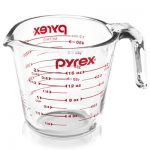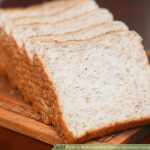
Q: The conversations about eggs which can’t go in a microwave oven take place every now and then. The reason for the categorical statements is the catastrophic consequences for your kitchen and the device. However, one of my friends, who is a chief cook, declares that eggs can be cooked in the microwave both in the shell and without it. You are just obliged to do that wisely. What’s the secret? Is it really possible to put an egg in the microwave oven?
Is It Possible to Microwave Eggs?
All the information concerning the eggs in the microwave oven that you find on the Internet is partially true.
The matter is that you should never microwave eggs in the shell as they are, i.e. take an egg, wash it and place on the dish inside the microwave oven. No, don’t do this.
The egg will explode and destroy your device, just as your kitchen will turn into a post-apocalyptic scene.
It is another matter to approach the process professionally and learn the methods of microwaving eggs which do exist and do work.
How to Microwave Eggs in the Shell?
Put the number of eggs you need in a heat-resistant bowl for the microwave oven and pour in salted water.
Use either a large glass or a plastic mug.
Make sure that there is some space between the eggs, or they will crash. Think of taking a bigger bowl so that the eggs have enough space to lie at the bottom together.
Pour in the cold water so that it fully covers the eggs and tops them by a centimeter or so.
If the eggs are not completely drowned, they may explode.
You can accelerate the process of boiling eggs. Just pour in boiling water instead of cold.
In any case, make sure that the eggs are completely drowned.
Add a tablespoon of salt which will prevent the eggs from bursting during the process of microwaving.
The time needed to cook the eggs following the above-mentioned method is about 12 minutes at middle power for hard boiled eggs and about 3-6 minutes for scrambled eggs.
A couple of secrets while microwaving eggs:
- Check the readiness. Take one of the eggs out of the microwave oven, put it in cold water for a few minutes and peel it. If you don’t want to check them, then simply take more time to microwave the eggs
- If you pour in the boiling water, not the water at room temperature, they will be hard boiled after 3-6 minutes of microwaving at middle power.
- Let the eggs cool down after microwaving. The mug and its contents will be too hot to take them barehanded. Use a towel or special potholder to take the container out of the microwave oven.
- If you want to accelerate the process of cooling, pour out the hot water and pour in cold water. Thus, the eggs won’t be overcooked.
Microwave Eggs without Eggshell
We recommend you to follow this absolutely safe method of microwaving eggs. Now that you know how to microwave eggs in the eggshell, the time has come to learn a safer method of cooking this extremely healthy product that chicken gives us.
You can boil whites and yolks separately avoiding overcooking or exploding.
Also, you don’t need any water to cook the eggs in the microwave oven by this method.
Take these steps:
- Take two bowls for the microwave oven and oil their bottoms and walls with vegetable oil or butter using a paper towel
- Break an egg and separate the yolks from the whites
- Put the white in one bowl and the yolk in the other
- In case you decide to put them both in one bowl, remember that the two parts of the egg can boil unevenly. The white might be underboiled and the yolks overboiled and ‘rubbery’
- Pierce the yolk with a knife or a fork to free the steam
- Cover each bowl with the lid, a piece of food foil, parchment or waxed paper so that the latter does not touch the egg.
- Microwave the whites as well as the yolks at low or mid power and often look inside to check the readiness
- Let the eggs sit in the microwave oven for 2-3 minutes more to get to readiness.



